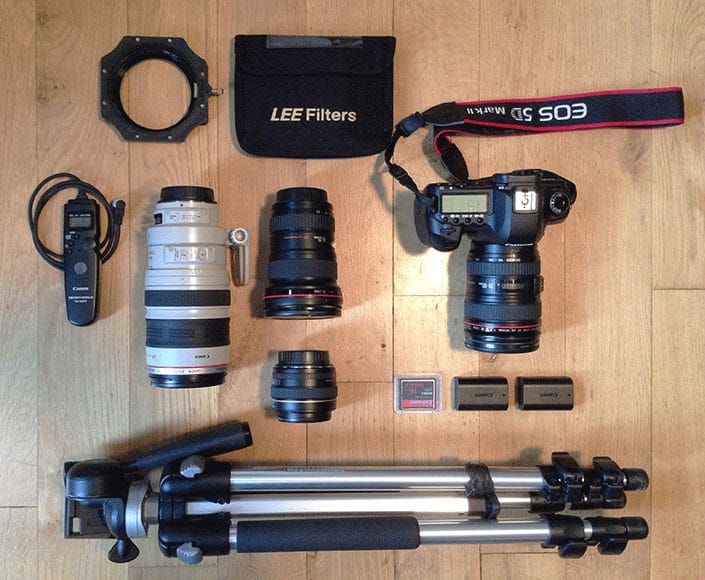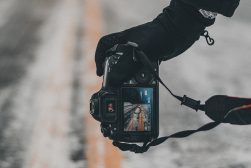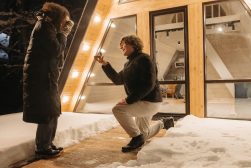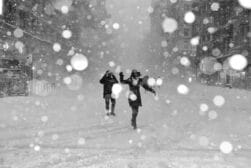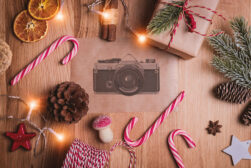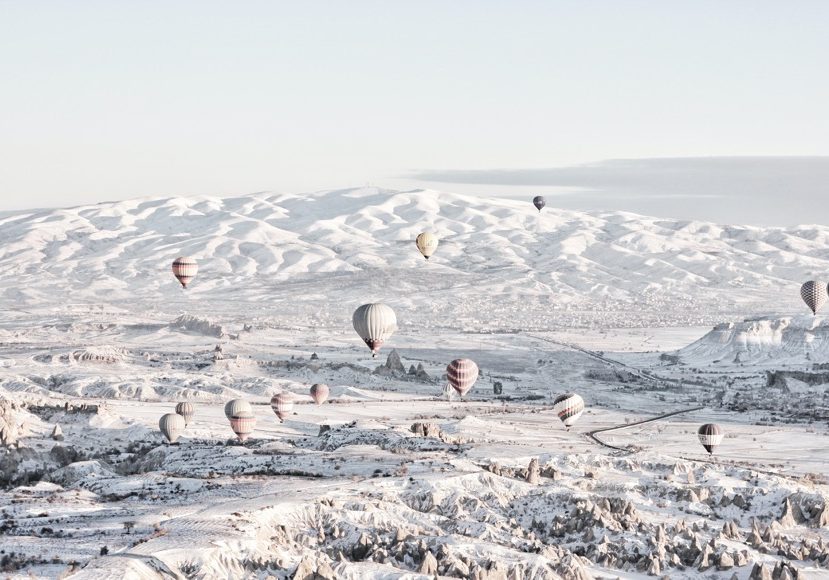
How to Shoot in the Winter (Photography Tips for Snowscapes)
Planning to take your camera outdoors with you this Winter? Check out our guide to 19 pro tips to help you get the best Winter photos... despite the cold!
Learn | Photography Guides | By Greg Cromie
A lot of photographers pack away their camera gear when winter arrives.
Perhaps their gloomy winter mood makes them believe that the disappearance of the sun restricts their creative pursuits!
But this couldn’t be further from the truth! With the right winter photography ideas, anyone can head out into the snow and capture fantastic winter photos.
Our guide to winter photography is the number one source for everything you need to know about making the most of the cold weather – regardless of the challenges.
You’re probably asking yourself, “how do you take pictures in winter?”
We’ll answer that with the best winter photography tips for incredible images, including the best equipment, camera settings and how to shoot different styles of photos.
We’ll even throw in the top trending winter photos hashtags and inspirational quotes to boost your winter portraits on social media.
So let’s dive into the tips!
19 Cool Tips for Amazing Winter Photos
1. Choose the Right Equipment
Winter photography provides an annual opportunity to get out with your camera and see the world in a new way.
Taking photos during winter is a challenge even for the most experienced photographers. First off, you need to ensure you have the proper winter photography gear for the season.
Let’s take a closer look at what’s necessary for winter photography.
- Camera
Cameras all have a recommended minimum and maximum operating temperature. When it’s too cold, the camera may freeze and not respond to any of your controls.
Fortunately, some cameras can deal with extreme cold and are also weather-sealed against freezing and rain. If not, consider picking up a rain cover or ‘storm jacket‘.
Older DSLR cameras are not as good at handling the cold – that raises the question of how cold is too cold for a DSLR? The Canon EOS 5D Mark IV has an operating temperature range of 32 – 104F – most cameras operate in a similar range.
Cold weather can impact the camera’s LCD or EVF (electronic viewfinder), making it sluggish or blank. It’s not a permanent issue and will resolve itself once the camera warms up, but beware of condensation issues when moving from cold to hot.
With winter photography, check the camera manual or website for the operating temperature to make sure it will withstand the cold.
You’ll also need a camera that has manual controls of shutter speed, aperture and ISO to prevent over-exposed images.
- Lens
Lenses will do just fine, if not better than a camera, in cold temperatures – most new lenses feature weather sealing.
If shooting with a zoom, mind the gap between the lens barrels to ensure it doesn’t freeze up and prevent you from extending the lens.
Also, keep the lens hood on to stop snow, sleet and rain from falling on the front lens element.
The biggest lens issue in cold weather is the electronically controlled focus motors slowing down. It can result in your autofocus performance becoming unresponsive or laggy.
How Much Do You REALLY Know About Photography?! 🤔
Test your photography knowledge with this quick quiz!
See how much you really know about photography...

The easiest way to overcome this is to use manual control to set sharp focus on a subject.
- Filters
Neutral Density filters help to cut down the excessive glare caused by light reflecting off the snow and ice in winter photography.
If shooting long exposures in a winter landscape, an ND, Variable ND, or Graduated ND filter is ideal for controlling your exposure.
- Tripod
Practice opening and setting up your tripod with gloves (see the best winter gloves for photography), as trying to set up a tripod for the first time in freezing conditions may prove tough.
High-quality tripods suited for extreme weather feature locking systems that won’t freeze and are easy to manage.
Also, ensure that your mounting plate connects to your camera before heading out – otherwise impossible with cold, numb fingers.
It’s also worth considering a lightweight travel tripod (like these) since you don’t want to be weighed down when trudging through deep snow.
- Batteries & Memory Cards
One of the most significant issues with winter photography is camera batteries getting too cold.
Batteries work best when they’re warm, and if they get too cold, the battery life drains rapidly – a freshly charged battery can drop half of its charge.
Pack plenty of spare batteries to prevent your photography trip from ending early.
Also, keep the batteries warm and insulated from the cold as much as possible. Keep them inside your jacket and close to your body heat or store them in a pouch with one or two hand warmers.
The best memory cards operate at extreme temperatures of between -13 to 185F, but it doesn’t hurt to keep them warm with the batteries.
2. Control Exposure Settings

A common question I get asked is, “what setting should I use for snow photography?’. The answer to that depends on what you intend to shoot.
Knowing what you intend to photograph is the first step to the best camera settings. Setting shutter speed, aperture, and ISO will result in a correctly exposed image and your subject in focus.
Even on overcast days, snow and ice reflect a lot of additional light. As a result, you run the risk of overexposing your photos – too bright with details lost in the brightness.
Compensate for the additional brightness with settings – start with ISO at its lowest. If your camera features exposure compensation settings, use this to reduce the exposure value.
If you’re shooting moving subjects, a faster shutter speed captures the action in detail and is excellent for bright conditions.
A wide lens aperture will let in too much light – consider using a narrower aperture to restrict it. If shooting a landscape, use f/16 or f/22 so your scene is in focus and correctly exposed.
3. Capture Winter Photography Portraits

Winter is a great time to shoot portraits and develop as a portrait photographer – especially those that prove popular on Instagram.
Taking winter photography portraits in a snowy environment elevates your images since in many countries, seeing snow is something of a rarity.
As winter scenes are snowy and white, skin and hair colours ‘pop’ due to higher contrast. Make the most of a snowy field or a snow-covered tree as the background element.
Winter jackets with a (fake) fur collar or hood are especially appealing as they softly frame the face. Woollen scarves also prove helpful in framing the face and directing the viewer’s eye to your subject.
And if there’s snow falling, you have a winning combination as it adds magic to your winter portrait.
See our article on snow photography tips for some more photo ideas.
4. Photograph Couples and Families

Winter doesn’t have to be all gloom and long cold days. Make the most of the weather to get outdoors and do some photo shoots of couples and families.
Soft white backgrounds, falling snow and snow-laden trees make for the perfect backdrop for fun and playful couples portraits.
Or, if you want to get great photos of the family, get them to play in the snow – even a snowball fight creates a dynamic family portrait session.
Winter portraits work best when your subjects interact with each other – static poses can make the viewer feel… well… a little cold!
5. Don’t Hide In The Fog
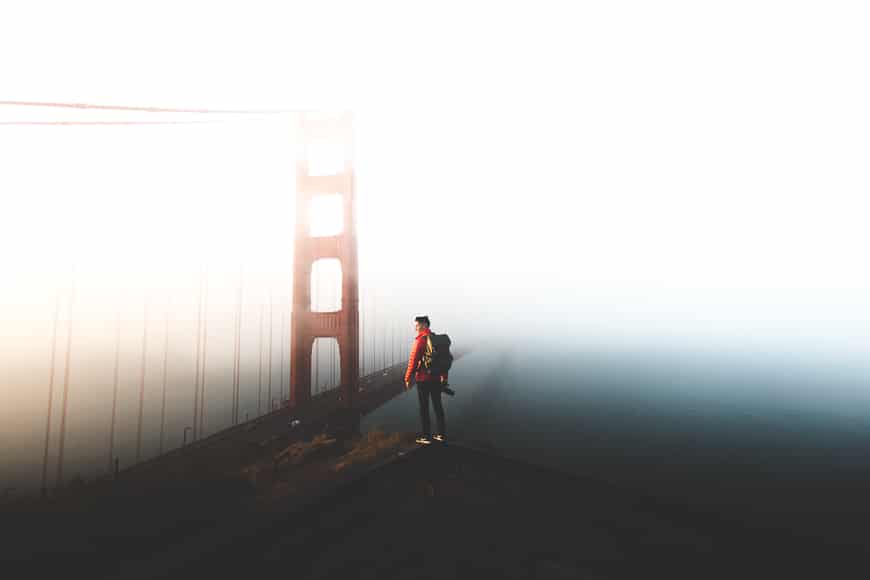
Cold conditions often result in low and dense fog covering the ground or even blacking out the whole landscape.
Thick fog is dramatic and has a lot of mystery when added to a composition. Consider using foggy conditions as a background with a lone person standing before it.
Alternatively, try and photograph people and objects that are disappearing into or emerging from thick fog.
Just remember tobe careful with overexposing your photos as fog reflects a lot of light.
6. Search For Winter Wildlife
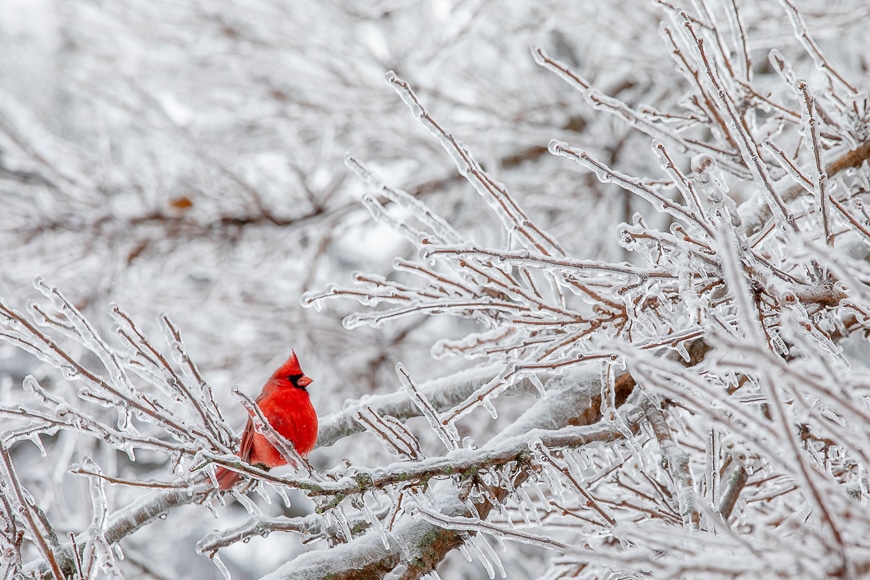
Winter is an excellent time for wildlife photographers; you have the opportunity to capture unique wildlife in their natural habitats.
With the correct exposure compensation settings and a telephoto lens, you can capture stunning images of wildlife in extreme weather.
What’s more, winter wildlife images look best when the animal is framed within a white snowy foreground, background and even dusted with falling snow.
The contrast between the softness of the snowy landscapes and the animal’s fur or colours will draw attention.
7. Take Macro Shots of Snow Flakes and Bubbles

Macro photographers should rejoice in the winter months as they can spend time photographing snowflakes close-up. Their tiny and unique patterns can only be showcased through macro photography.
A popular winter weather macro project is to photograph frozen soap bubbles. Gently blow kids’ bubble mix onto a soft bed of snow – the cold temperatures will freeze the bubbles.
Get in nice and close to photograph the bubbles and their fascinating surface patterns.
Just be mindful of your exposure, as you’ll use a wide aperture in the process to blur the background – you might need to compensate with a faster shutter speed and lower ISO.
8. Set up Christmas Photography

If you love a white Christmas, winter is the perfect time to get creative by combining a Christmas theme with winter elements.
A simple idea is setting up candles and Christmas decorations in a mound of snow for dreamy scenes in a photo.
Or, if you or your neighbours install lawn ornaments at Christmas, take a nighttime stroll to capture them illuminated.
The icy lawns glisten with the reflected glow of Christmas lighting in the tree branches making a focal point in your photo.
We have other articles on Christmas photography and Indoor Christmas photoshoot ideas, so make the most of the tips!
9. Capture Winter Food Photography
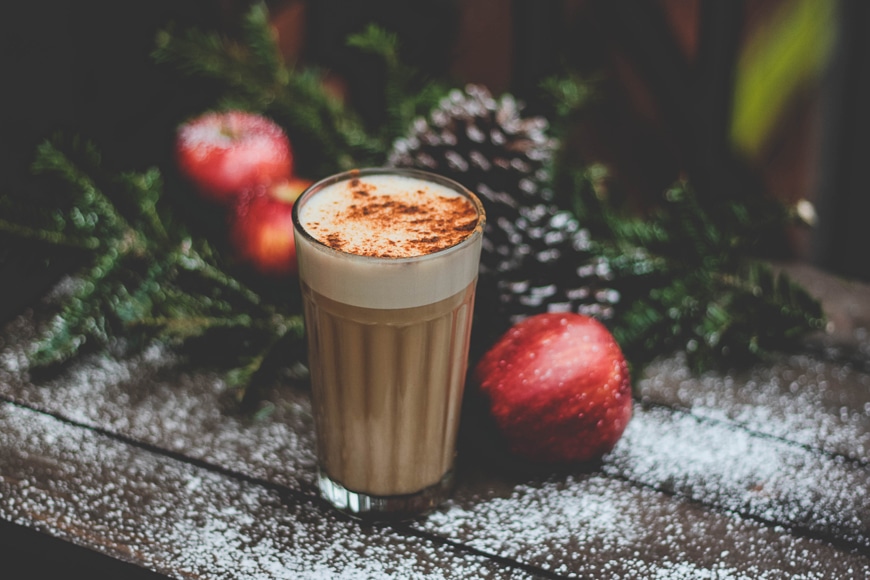
There’s something very comforting about winter food – hot chocolate, meaty stews, delicious soups and freshly baked bread all draw the family to the kitchen.
If you plan to do some winter or Christmas themed cooking, be sure to have your camera handy. It’s a fun indoor idea that the whole family can get involved in.
Prepare an area ideal for showcasing a plate of steaming food or a tray of cookies just out of the oven. Decorate your tabletop with pinecones, sprigs of herbs and candles to create a winter-themed masterpiece.
Take photos of your mouth-watering roast top-down or from an interesting angle – now go ahead and devour it!
10. Photograph a Winter Wonderland

Winter landscapes provide breathtaking backdrops to your landscape photography – they grant you the chance to stand out as a landscape photographer.
Snow-capped mountains, snow-laden valleys and trees frozen in time add a mystical drama to a landscape shot.
Make the most of the lack of colour in winter landscape photography. Shoot in black and white or reduce the colour saturation later in post-processing software.
Another great feature in a winter landscape shot is a frozen water feature such as a creek or pond in the foreground.
And for those that can reach the extremes ends of the earth, considering organise a northern lights landscape shoot. The Northern Lights are one of the most amazing phenomenons to observe.
11. Document Architecture In The Snow

With a wide-angle lens, take shots of exciting architecture surrounded by a frozen landscape.
The wide-angle lets you take in more scenery and add context to your composition – it tells a greater story.
It’s especially appealing when buildings are from a bygone era. The contrast between the whiteness of the surroundings and the brick and timber of a structure stand out.
12. Rise Early for a Winter Sunrise

Sunrise is an ideal time to head out early and take landscape photos during winter.
The golden light cast by the rising sun illuminates the landscape and creates interesting contrast and depth in scenes.
For a truly magical composition, keep an eye on the forecast for morning fog that will start to part and clear with the sun’s rising.
In your photo, the sun’s rays will appear to cut through the fog in shafts of light as the blue skies open up. See here for more sunrise photography tips.
13. Stay Out For Sunset

As the sun sets, the glow becomes golden (golden hour) and casts a warm light across a city scene or landscape.
The sun’s low angle will also result in long, deep shadows spreading across a landscape or city scene.
In a winter landscape scene, mountain ranges appear bright orange while the valleys below disappear into blue shadows. The contrast between these two elements will make your photo pop with life.
Here’s our guide to sunset photography tips.
14. Capture Melting Ice Shots

If you live in a region that has long cold winters, chances are ice will form on the tips of your eaves, roofline or children’s play equipment.
With warmer, sunny days, or the end of the season, ice begins to melt – slow water droplets first appear followed by running streams of crystal clear water. The same occurs in nature, where ice melts and forms natural streams.
Capture close-ups of water running in rivulets and dripping from a frozen icicle. My hot tip is to place your camera on a tripod and capture a long exposure photo.
15. Take A Snowy Pet Photo

Similar to photographing the family, taking shots of pets in the snow is a lot of fun.
To get the most dynamic images, keep your pet moving by throwing a ball or playing a chase game – they’ll kick up sprays of snow, which look great when captured in a photo.
Snow and ice covering their fur coats create a stunning contrast in textures.
Use a faster shutter speed and continuous autofocus to take a photo of dogs shaking the snow from their coat – it will spray out in all directions.
16. Protect Your Camera With… Rice!
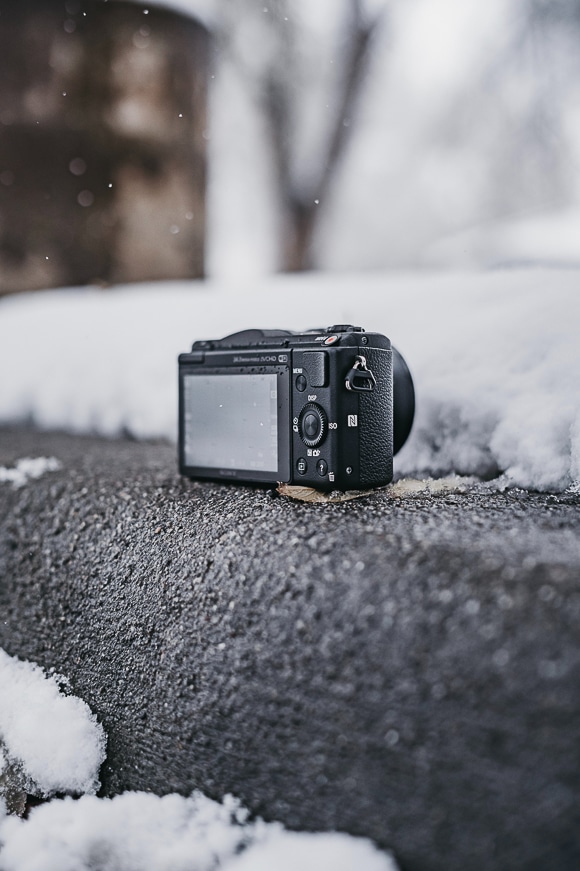
At the end of a cold-weather day, you need to take care of your camera as there’s a couple of problems using it in extreme cold.
The biggest issue is moisture getting inside your camera or lens – even if they’re weather-sealed.
Moving your camera from cold winter conditions into a hot indoor environment causes condensation to form inside the camera and lens. A buildup of moisture can damage electronics or even cause mould to grow inside.
One way to manage this to put your camera body and lens into a sealed freezer bag before taking it inside. The condensation should form on the bag and not the camera.
If you suspect your camera has internal moisture, place it inside a sealed container such as a large plastic food storage box. Next, take the highly scientific approach of filling the container with rice.
Yes, I said to fill it with rice – it’s one of my favourite winter photography tips. Rice is highly absorbent and extracts moisture from inside a camera.
Alternatively, collect Silica packets that come with new products such as clothing, homewares and some groceries.
Like rice, they absorb moisture – don’t leave Silica around children and pets as it’s toxic stuff.
17. Protect Your Extremities

Your camera still works at 32F – but can you?!
We often march into a photography experience so focused on the gear that we lose sight of our needs.
It’s no secret that when spending time in cold weather conditions, the first things to get cold and uncomfortable are your toes, fingers and nose.
Your extremities are further from your heart, and as a result, you get cold fingers and toes. The two most essential pieces of camera equipment are gloves and shoes.
Weatherproof shoes or snow boots and one or two pairs of thermal socks will see you through. You’ll need a pair of glove liners and gloves rated for the conditions to keep frostbite away.
The challenge is controlling a camera with two pairs of gloves. Or worse is to work without gloves and risk exposure and frostbite.
Fortunately, there’s a range of gloves specifically for photographers to operate their cameras in cold conditions. Some gloves have special rubber pads on the fingertips to give you greater grip on lenses, buttons and dials.
Our recommendation is by a company called Valleret and their Markhof Pro Photography Gloves – perfect for photographing in colder climates.
18. Keep It All Safe In a Backpack

If you’re heading into a winter wonderland to take amazing photos, you’ll need something to carry your equipment.
To deal with rain, sleet and snow, you’ll need a camera bag that’s waterproof and weather-sealed. My recommendation is a high-quality all-weather camera backpack – see our guide.
A backpack keeps your expensive kit off the cold, wet and muddy ground – putting it on the cold ground will contribute to the impacts of freezing. Plus you’ll appreciate the warmth trapped against your back.
A camera backpack keeps everything organised, dry and secure regardless of how far you have to travel.
19. Plan Your Personal Safety
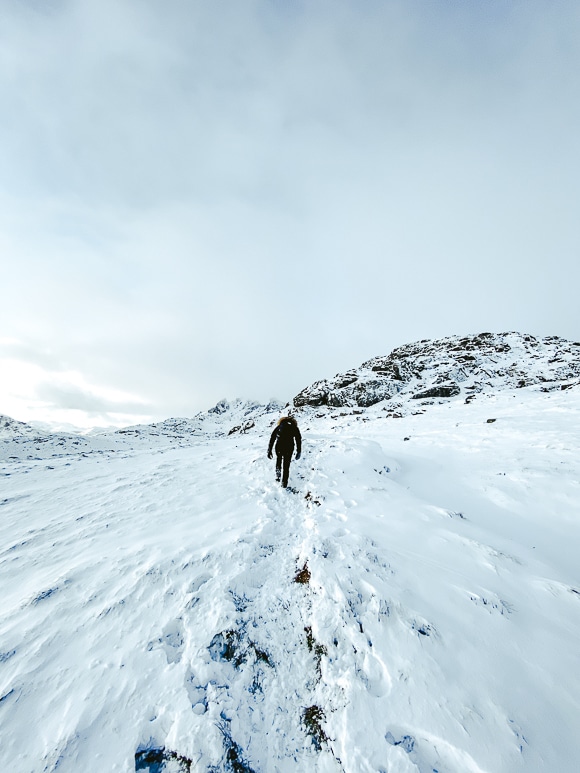
If you’re headed into extreme weather, spare a thought for your wellbeing – and that of the people you travel with. Here are some basics for extreme adventures:
- Plan your journey with up to date maps.
- Share your travel plans with those not travelling with you.
- Let local authorities know your objectives, especially if heading into remote areas.
- Wear and pack clothes rated to keep you safe and comfortable in extreme conditions.
- Even in cold weather, hydration is essential – as are high protein snack.
- Keep track of the weather forecasts and have a Plan B should the weather turn foul.
18 Winter Photography Hashtags
For the Instagram crowd that loves to populate their photography description with relevant hashtags, we’ve compiled a list of them.
These are the top trending winter hashtags of 2024 and are sure to bring eyeballs to your winter photography feed!
We’ve included some generic winter hashtags as well as some winter photography ones too:
- #winter
- #wintervibes
- #winterwonderland
- #winterwalk
- #instacold
- #winteriscoming
- #autumnvibes
- #winterfashion
- #fall
- #autumn
- #cold
- #photooftheday
- #naturephotography
- #winterphoto
- #winterphotography
- #winterphotoshoot
- #winterlandscape
- #snowphotography
Winter Photography Quotes
Like most seasons, winter delivers fresh inspiration and another opportunity to see the world in a new light. And what’s inspiration without a wintery song lyric, quote or proverb to set the scene?
Do you tag your winter photos with inspiring or dark quotes to match the mood of the season?
- “Winter is coming.” —Ned Stark, Game of Thrones.
- “Walking in a winter wonderland.” —Richard B. Smith.
- “And the sky is a hazy shade of winter” — Paul Simon and Art Garfunkel.
- “Let it snow, let it snow, let it snow.” —Sammy Cahn.
- “Kindness is like snow. It beautifies everything it covers.” —Kahlil Gibran.
- “Summer friends will melt away like summer snows, but winter friends are friends forever.” —George R. R. Martin.
- “What good is the warmth of summer, without the cold of winter to give it sweetness.” —John Steinbeck.
- “One kind word can warm three winter months.” — Japanese Proverb.
- “Winter reminds us that everyone and everything needs some quiet time.” — Katrina Mayer.
- “S#*t it’s cold!” – Greg Cromie
Final Words
As you can see from our winter photography tips, winter is not the time to close up shop and pack away your camera gear.
If anything, it’s a perfect opportunity to see the world in a different light and experiment with new ideas.
With the right camera gear, knowledge of camera settings as well as some inspiration, you’ll be out knee-deep in the snow taking stunning portraits, family shots and landscapes.
What’s your favourite time of year for photography? Do you have a preferred winter photography genre that you can’t wait to get back to every year?
Share your thoughts on winter photography and comment with some of your winter photography tips, ideas and tricks. Feel free also to ask questions and become a part of the conversation. Happy Shooting.

Check out these 8 essential tools to help you succeed as a professional photographer.
Includes limited-time discounts.





